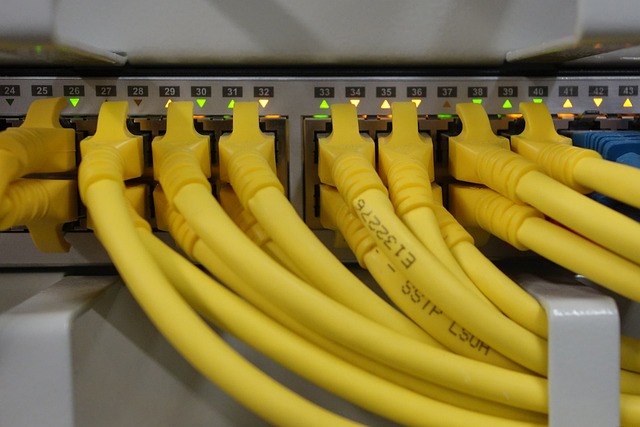Structured cabling for businesses is a vital solution for expanding network reach and enhancing performance. By integrating with wireless access points (WAPs), it ensures consistent high-speed internet across large facilities. It simplifies management, offers faster data transfer rates, and supports diverse business applications. This scalable system adapts to changing demands without costly rewiring, minimizing downtime. A hybrid approach combining structured cabling and Wi-Fi optimizes network coverage, stability, and energy efficiency in dense environments.
Wireless access point cabling is transforming network coverage, especially for large-scale implementations. This article delves into the intricacies of this technology, focusing on structured cabling as a key enabler for businesses. We explore the benefits of structured cabling, strategies for designing comprehensive network coverage, and best practices to ensure optimal performance. Discover how these elements converge to enhance connectivity, drive efficiency, and support the evolving digital landscape for enterprises.
Understanding Wireless Access Point Cabling
Wireless access point cabling is a critical component in expanding network reach and coverage, especially for businesses seeking robust connectivity solutions. Structured cabling plays a pivotal role here by providing a reliable backbone for data transmission between wireless access points (WAPs) and core network infrastructure. This structured approach ensures that high-speed internet and network services can be seamlessly delivered across large areas, including extensive campuses or multi-storey buildings.
By integrating structured cabling with WAPs, businesses gain the flexibility to strategically place access points to meet specific connectivity needs. This means employees can enjoy consistent, fast connections regardless of their location within a facility. Moreover, structured cabling facilitates easier network management and maintenance, ensuring any issues are identified and resolved swiftly, thereby enhancing overall operational efficiency.
Benefits of Structured Cabling for Businesses
Structured cabling offers numerous advantages for businesses seeking to enhance their network performance and reliability. By implementing this system, companies can achieve faster data transfer rates, ensuring efficient communication between devices and improving overall productivity. This is especially beneficial for large organisations or those with multiple branches, where consistent and robust connectivity is essential.
Moreover, structured cabling provides a scalable and flexible infrastructure. It allows businesses to easily add or reconfigure network components, accommodating growing demands without the hassle of extensive rewiring. This modular design simplifies troubleshooting and maintenance, reducing downtime and costs associated with network issues. As such, it becomes a reliable backbone for modern business operations, supporting various applications and technologies while promoting efficient network management.
Designing Network Coverage for Large Areas
When designing network coverage for large areas, such as extensive office spaces or industrial sites, structured cabling becomes an indispensable tool for businesses. This involves meticulously planning and implementing a fiber optic or copper cable infrastructure that supports wireless access points (WAPs) designed to extend network reach across vast regions.
A well-structured approach ensures optimal signal strength and stability, minimizing interference from external sources. It also facilitates future expansion by allowing for flexible reconfiguration of the network layout without disturbing existing cabling. This is especially crucial in dynamic business environments where space utilization and operational requirements may change over time.
Best Practices for Extended Network Implementation
When implementing extended network coverage through wireless access points, adhering to best practices ensures optimal performance and reliability. One crucial aspect is integrating structured cabling for businesses alongside wireless infrastructure. This hybrid approach leverages the strengths of both technologies: structured cabling provides a robust, reliable backbone for data transmission while Wi-Fi extends connectivity seamlessly across larger areas. By carefully planning and coordinating these two components, network administrators can achieve seamless coverage without compromising speed or stability.
Additionally, prioritizing consistent channel planning and power management is vital. Using tools to monitor and optimize wireless channels minimizes interference from neighboring networks, ensuring a stable connection even in dense environments. Power management ensures that access points are not overpowered, reducing energy consumption and heat buildup while maintaining strong signal strength across the extended network coverage area.
Wireless access point cabling, leveraging structured cabling principles, offers businesses a scalable and flexible solution for expanding network coverage. By meticulously designing and implementing these systems, organizations can ensure seamless connectivity across large areas, enhancing productivity and improving the overall user experience. Structured cabling provides the backbone for robust wireless networks, enabling efficient management and future-proofing against growing demands.
